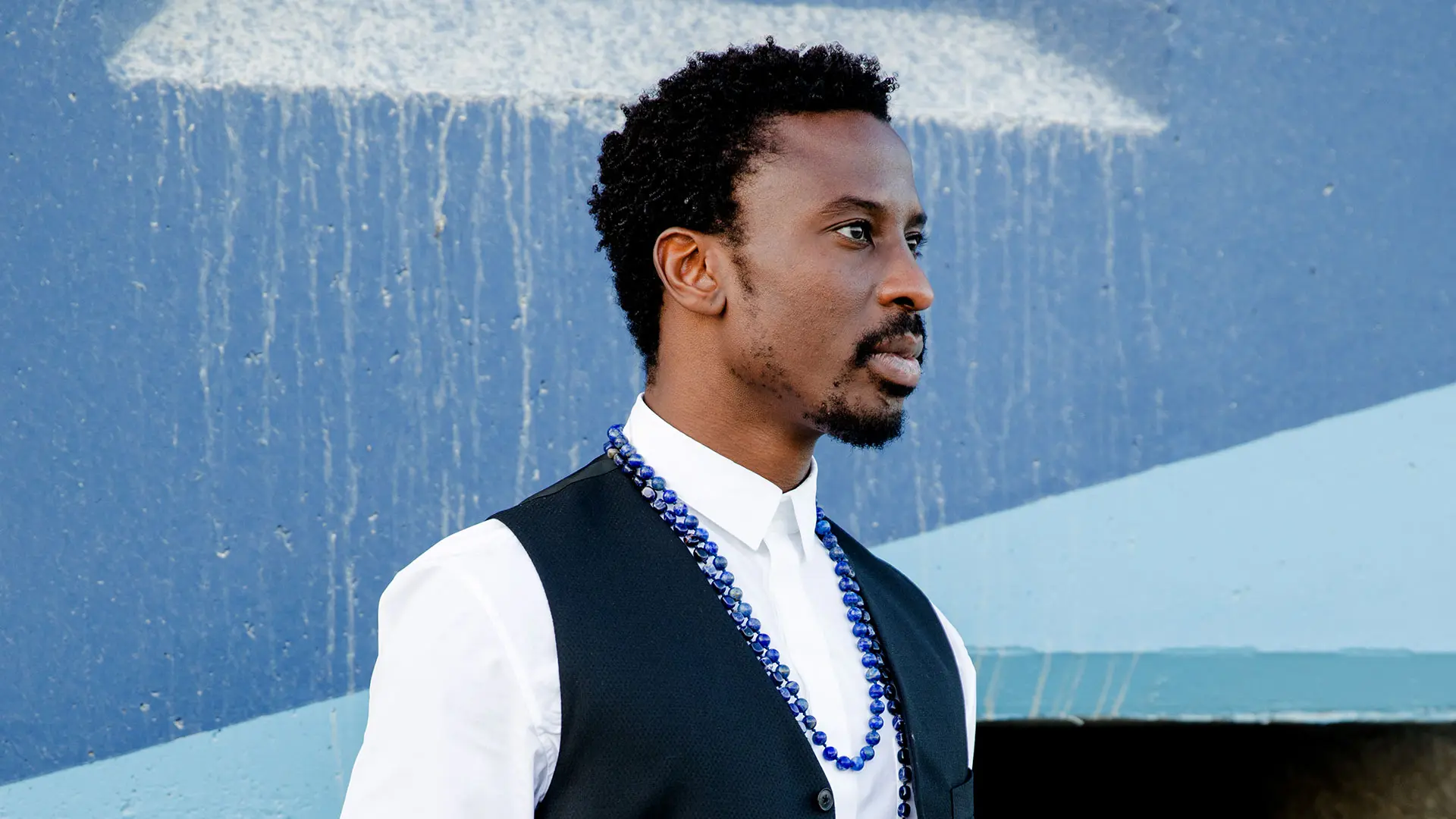Created in collaboration with the Salone del Mobile.Milano, the building features a linear and discreet design, designed to blend into the surrounding environment at high altitude in a deep connection with nature
Ini Archibong

Photo by Eeva Sultari
His mantras include working with clients who produce and think Italian-style. Famous for his error philosophy, which derives from liberating oneself from the obligatory relationship between form and function (so insufferably German).
Ini Achibong (1983) is the son of Nigerian immigrants to the United States, he was born and raised in Pasadena, California. He currently lives and works in Neuchatel, Switzerland. His work is characterised by a deep interest in master-craftsmanship and its intrinsic relationship to technology – both modern and ancient.
Everything I do comes from a place of creative expression. I try not to put a table on what I do, because what I do changes everyday. The one thing that is common is the act of creative expression. I tend to think of myself as a creator. What I create depends on what I wish to express.
When done well, I believe that whatever we design or create is a glimpse into our current perspective. This perspective is made up of the collection of experiences we have had up to that moment. In this sense, I carry with me all the cultures, climates, and experiences from these various contexts. I think this somehow allows me to more clearly express ideas in a way that is informed by my time spent learning how to navigate different cultural contexts.
I approach all design in the same way. I try to find the core connection between myself and who/what i am designing for. When designing for Hermès, I feel a strong connection to the ethos of quality, craft, exceptionality, and playfulness that runs through the luxury house’s DNA. Taking on a watch design in this scenario meant thinking about all of those things and how they apply to the creation of a mechanical piece of jewelry which one wears close to the body for long periods of time. Then there is also the intangible….
One of the things that intrigued me about working in the luxury market is the fact that it is one of the few remaining industries where the perceived “inefficiency” of making objects by hand is not seen as a deterrent but rather as an opportunity to create the special things which some might find impractical. Within luxury, the way that an object makes you feel is as much an indicator of value as its functional capabilities. This stimulates me because it generally means that the people who interact with my creations have already opened themselves up to an opportunity for discovery. There are few other realms open to an industrial designer where this will be the case. Often the objects which we design are viewed purely through functional and commercial lenses. For me, designing for the luxury market allows for me to have a more nuanced conversation with the consumer.
This is still in the works.
SaloneSatellite is known to be the launching grounds for the careers of those who want to be known on the international design stage. I first learned about it through my furniture teacher Cory Grosser, who is a SaloneSatellite Alum. He stressed how important it was to be able to present works to a wide international audience which also includes the top brands from around the world. After meeting Marva Griffin in NYC, and receiving further encouragement from her over the years, I knew that when the time came for me to begin my career, that I needed it to begin with SaloneSatellite. I am proud that I was able to make my international debut in 2016 at SaloneSatellite, and I am forever grateful that I was able to make it happen through the support of my friend, Terry Crews.
To design a temple.
Real estate and natural assets
From concept houses designed by Tadao Ando to structures immersed in nature in Taiwan, taking in biophilic shelters and sustainable architecture: a journey through homes that become places of the soul, where nature and dreams meet in perfect harmony


A Showcase for “Brand Italy”: Interview with Piero Lissoni
A little more than a month before the opening of "Red in Progress. Salone del Mobile.Milano meets Riyadh", the Salone del Mobile.Milano’s event in Saudi Arabia, the celebrated architect and designer explained to us what the Business Lounge he has designed for the occasion will look like, and what stories its interior will tell about Italian design













